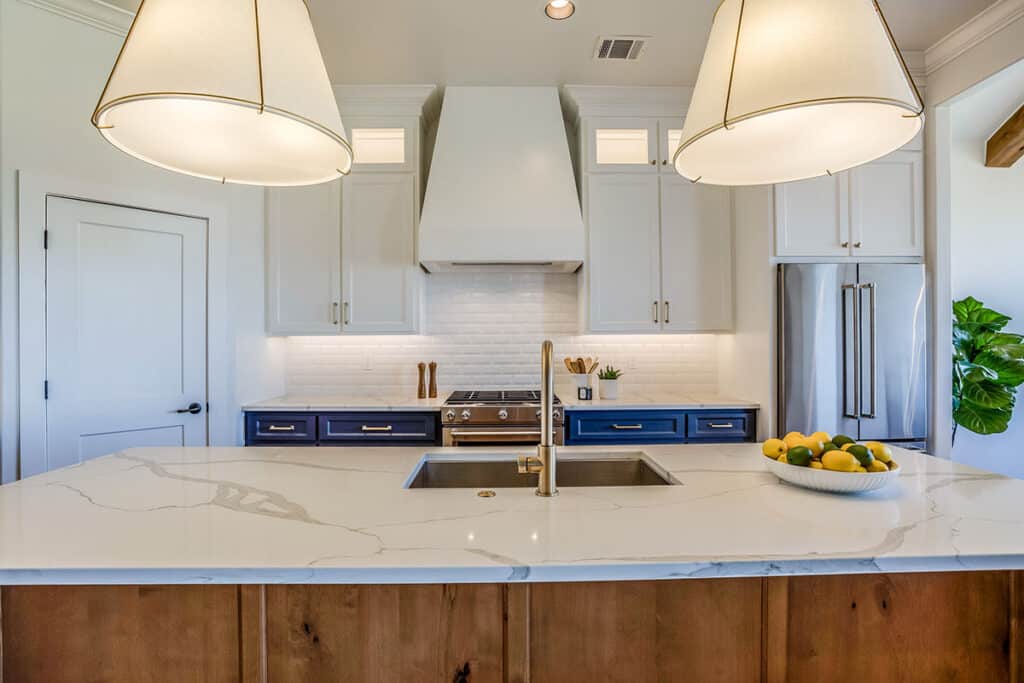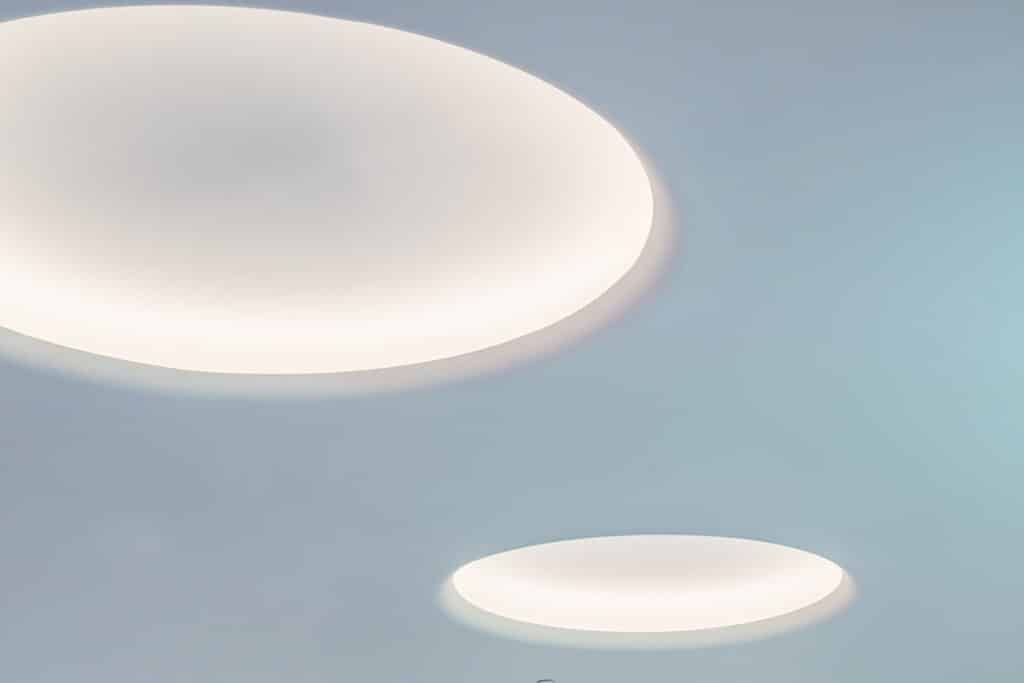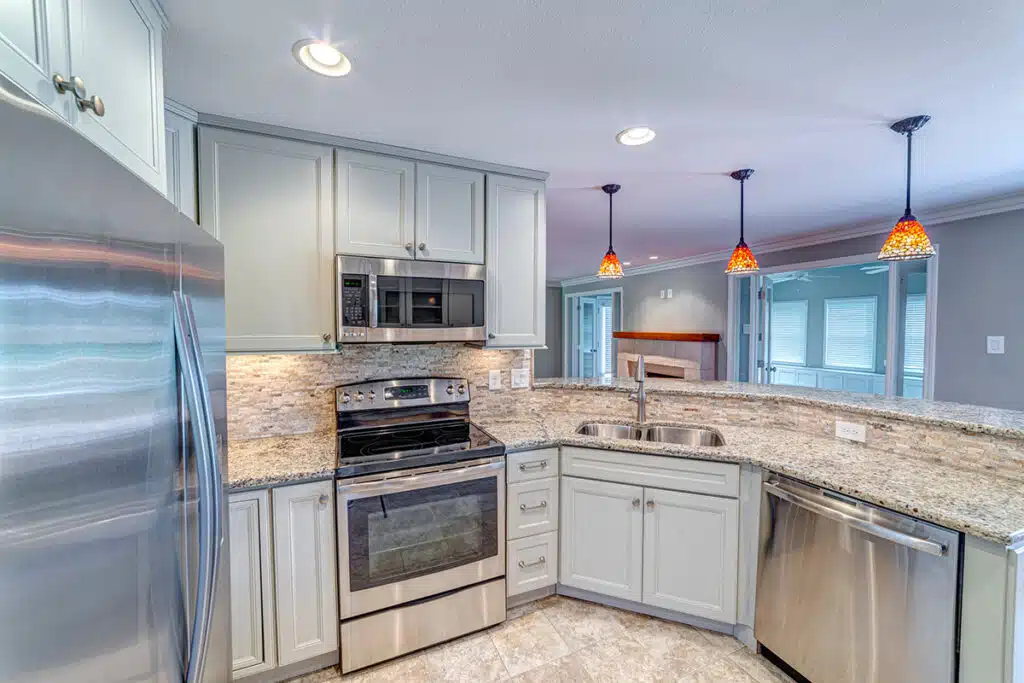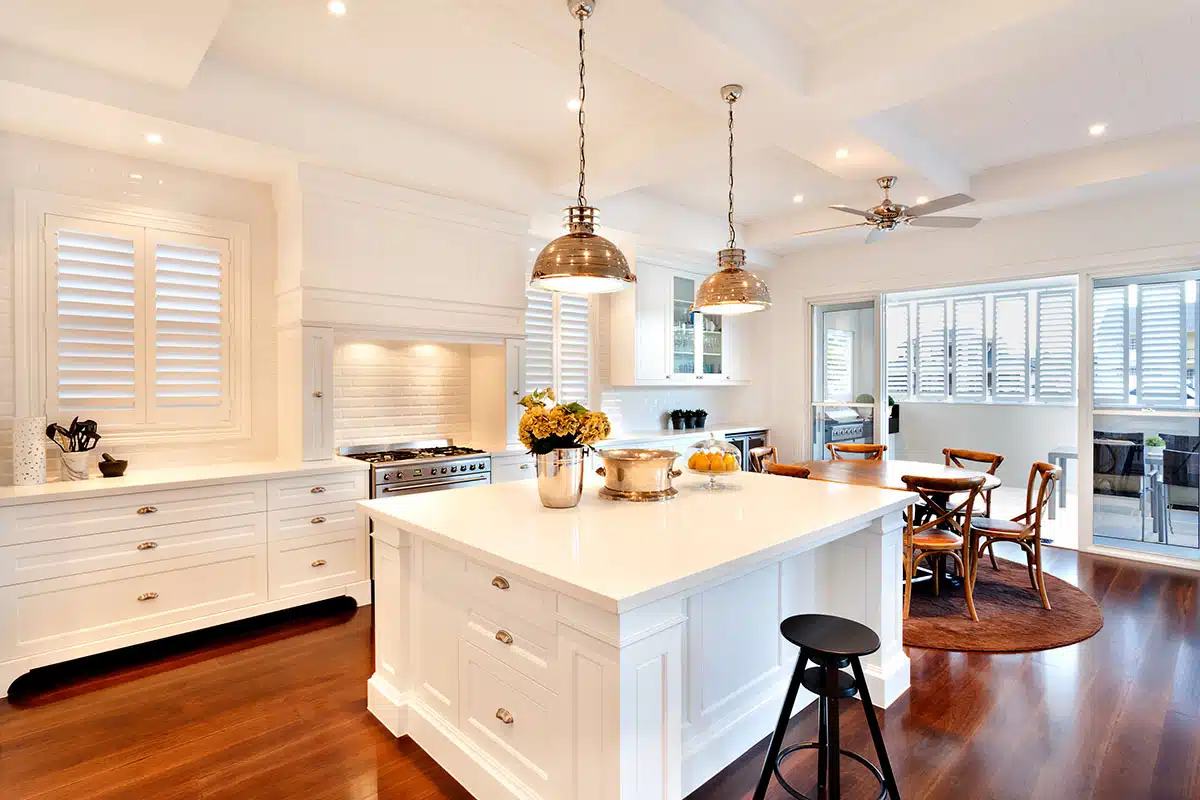You want to install lighting in your home, but you’re not sure whether to opt for a ceiling light or a pendant? These two types oflighting offer different styles and luminosities. We’ll tell you what sets them apart and help you decide which room in the house is best suited to them.
Ceiling and hanging lights: important elements in any home
Lighting in a home is very important, as it contributes to the correct luminosity in each room and helps to finalize a style. However, it’s not always easy to know which type of luminaire to choose: should it be aesthetically pleasing? practicality? technical specifications?
There are a number of criteria that can help you make a choice, including the size of the room, its function, and the type of layout and ambience you’re looking for. The right choice of light andbulb will bring many benefits to your home. It will save you a considerable amount of money if the layout is right, erase the flaws of a room by adjusting volumes, and sublimate an interior by emphasizing architectural features and decorative objects.

The differences between a ceiling light and a suspension lamp
A ceiling light and a suspension light don’t offer the same ambience, nor do they have the same characteristics, particularly in terms of brightness.
Ceiling lights for optimum illumination
A ceiling light is an electric luminaire that, as its name suggests, is fixed directly to the ceiling. This means it doesn’t have a suspended cable, and can be used for more discreet, modernist styles, even though elaborate ceiling lights are available today. Depending on the model, it can be rotated, so you can direct the light flow as you wish. Some ceiling lights also have more than one bulb.
The advantages of ceiling lights
- The price is generally quite affordable.
- It doesn’t take up too much space in terms of height, because it’s attached directly to the ceiling. This gain in space and practicality is therefore beneficial for certain rooms in the home.
- Its direct anchoring in the ceiling also allows for wider light distribution, providing optimum, main beam illumination.
- Increasingly, it’s going hand in hand with new technologies such as home automation and LED bulbs.
The disadvantages of ceiling lights
- The ceiling light is not imposing and is often minimalist, so it won’t necessarily contribute to the decoration of the home. It will therefore have less presence than a chandelier or other pendant light.
- It’s not always easy to install, depending on ceiling configurations.
Hanging lamps for a warm ambience
Pendant lights feature a hanging bulb, as the name suggests. Unlike chandeliers, they have a wire connected to a base and a single light source. However, some pendants feature more than one bulb, as in the case of “enfilade” pendants, which are usually used for aesthetic purposes.
The benefits of suspension
- Its height can be adjusted, so it won’t be too imposing in certain rooms.
- Perfect for high ceilings.
- It’s a type of fixture that brings a lot of style to a home.
- It comes in many variations, so it’s easy to find the one that suits your style and mood.
The disadvantages of suspension
- Not suitable for all rooms, especially those with low ceilings.
- It can quickly become cumbersome in everyday use.
- It is a less optimal light source, and therefore requires other light points.
- Installation may be more laborious.
- It requires more daily maintenance.
- Multiple suspensions require the use of more than one bulb.

Which type of luminaire for which room?
Light plays an essential role in our homes, contributing to visual comfort. Every room has its own ambience and functionality, so it’s important to choose the right type of luminaire, lamp and bulb. Over and above the specific advantages and disadvantages of ceiling and pendant lights, the room for which they are intended should be taken into account when making your choice.
The kitchen: a functional room
The kitchen is a central room in the house, where we spend a lot of time. It is very versatile, as it can be used as a dining room and as a teleworking space, so it needs optimized lighting. The type of lighting is mainly functional, as the kitchen requires strategic light sources.
It’s therefore important to target the bright spots in this room, especially above the dining table and worktop, two areas where we need direct light. The ideal solution is to have hanging lights located at these two points, to ensure a direct flow of light. The rest of the room can be equipped with spotlights. A track system is ideal for the kitchen, to manage light levels. If, however, you want a diffused light flow and the room is rather large, opt for a ceiling light, in addition to strategically placed spotlights.
The living room: a place for living
The living room is where we spend a lot of time and where we entertain our guests. We therefore need a general brightness for this room, but also a lighting fixture that brings style to it. All three types of lighting(functional, accent and mood) are required for the living room. The choice of luminaires therefore lies in the variety of light sources. As the size of the room is generally important, it’s best to opt for a large ceiling light to provide optimal, warm lighting, conducive to conviviality.
If you want to add atmosphere to the room and several lighting directions, you can buy a ceiling light with several directional spotlights. Next, it’s a lamp that adds atmosphere to the room at strategic points, such as the sofa or desk.
The bedroom: a peaceful room
The bedroom is a room where we need diffused light. That’s why a ceiling light is generally preferred. However, a soft light is ideal for waking up and going to bed. For accentlighting, add a lamp on the desk, on each side of the bed and in the dressing room. A suspension lamp would be far too low for this room, and would not be sufficient to achieve a wide diffusion of light. You can fit a dimmer switch to adjust thebulb to your needs and obtain the desired light intensity.
The bathroom: a peaceful room
The bathroom is another functional room in the home. The light source should be close to the mirror, so that you can prepare in the best possible conditions. This is generally a small room, so it’s best to opt for a ceiling light, as a pendant would take up too much space and would not be a guarantee of safety. General lighting should be soft to maintain the bathroom’s relaxing atmosphere. Small spotlights placed above the mirror provideadditional lighting. Placed near bathtubs and furniture, they contribute toambient lighting.

Corridors: rooms of passage
For these special areas of the house, you can opt for suspended fixtures on a track to illuminate the entire length of the corridor. This area requires uniform, glare-free lighting, so it’s important to focus on functionality and aesthetics at the same time, because in a hallway, the light fixture is the only object that contributes to style and decoration. Choose anenergy-saving bulb for this high-traffic area.
In addition to the type of luminaire, its diameter, material, color temperature, luminous flux, type of ceiling, luminous intensity and type of bulb (incandescent, halogen or LED) must also be taken into account to achieve the perfect luminosity in each room.
Now that you know the main differences between a ceiling light and a suspension light, you can make your choice according to the layout of your rooms and other criteria to be taken into account. You can then add a lamp in strategic locations in each room to complete the lighting effect. Feel free to comment on your preferences and your choice of lighting fixtures for your home.

